Jump to...
Leadership with Passion through Kokorozashi
The key ingredient to success? Passion.
Finding your kokorozashi will unify your passions and skills to create positive change in society. This GLOBIS Unlimited course will help you develop the values and lifelong goals you need to become a strong, passion-driven leader.
Be sure to always hold out your business card with both hands. Don’t forget to bow at exactly 30 degrees. And above all, never forget to pour your boss a beer!
There’s tons of advice online for meeting Japanese clients or visiting Japan on business. But what if you’re preparing to enter a Japanese work environment all day, every day?
You don’t need a cheat sheet full of basic pleasantries, you need a full breakdown of all the essential aspects of Japanese working culture.
The GLOBIS Insights content team understands how stressful it can be to work in Japan as a foreigner…because we are foreigners, and we have been (successfully) working in Japan for years. This guide is the ultimate culmination of that experience. So whether you’re still riding your first wave of culture shock, or you’re a well-seasoned resident looking for a refresher, we’ve got your back.
Don’t be shy. Let’s dive right into it.
Japanese Corporate Hierarchy
If you watched anime growing up, you’ve likely heard the term senpai. That’s because in the Japanese school system, students refer to their senior classmates as senpai, and junior classmates as kohai. Both terms are honorifics that signal a hierarchical relationship between two people.
Anime characters often refer to their upperclassmen crush as ”senpai,’’ but it doesn’t work like that in the real world. In the Japanese workplace, a senpai is someone with more experience than you (not necessarily someone older than you). They show you the ropes, like a mentor.
Conversely, your kohai is someone with less experience than you (not necessarily someone younger), like a mentee.
If your coworker Takashi-san has been around a few years longer than you, he’s your senpai. You don’t have to call him Takashi-senpai (in fact, it’d be weird if you did), but you should show him some respect.
If Takashi-san suggests you adjust some slides in your upcoming proposal, you’d do well to heed that advice. Just the same, once you’ve been around for a while and new hires come aboard, you’re expected to look out for your kohai just like Takashi-san looked out for you.
Understanding and honoring the senpai-kohai relationship will go a long way in demonstrating to your Japanese coworkers that you have their back. It will also show then that they can trust you to be a supportive member of the team.
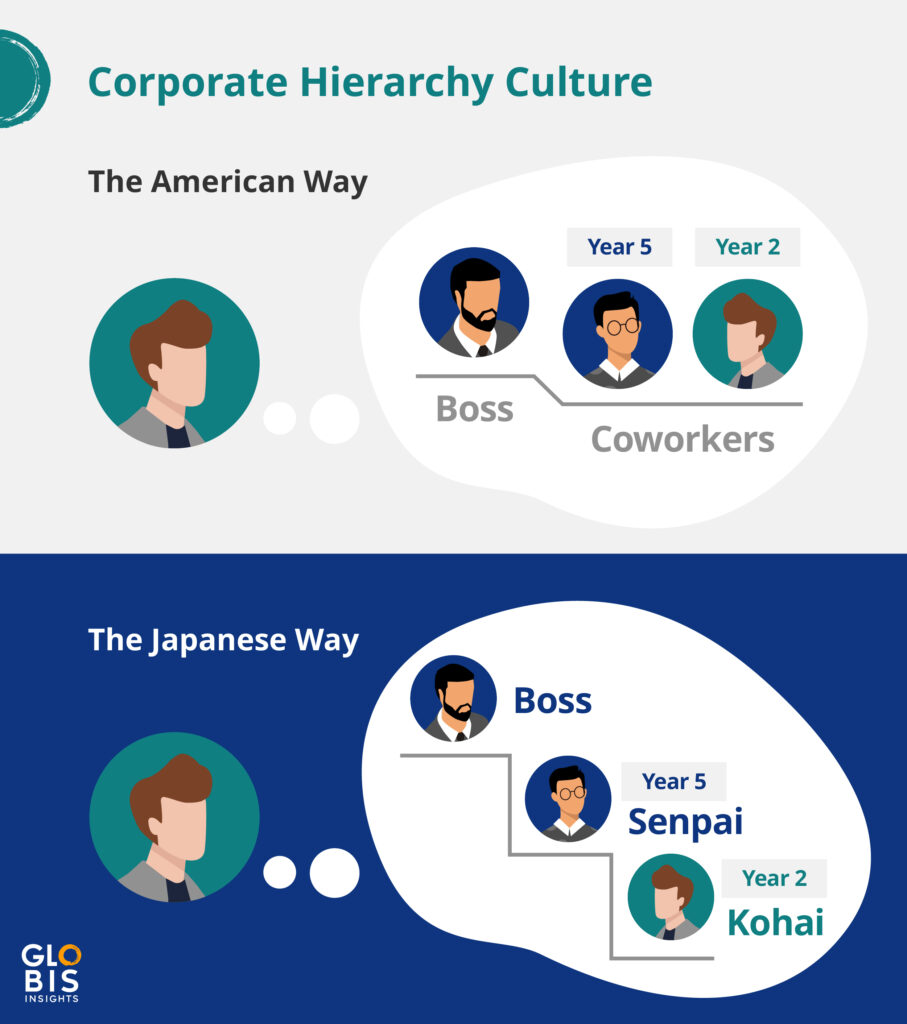
High-Context vs. Low-Context Communication
If you’re having trouble deciphering messages from your Japanese colleagues (be it verbally, Slack DMs, or just vibes), don’t worry. You’re not alone. Your Japanese coworkers likely feel the same way when you’re speaking to them. That’s because Japan operates largely as a high-context culture, whereas the west thrives on low-context communication.
Communication breakdowns are one of the most common issues you’ll experience as a foreigner braving the Japanese workforce. But you can get ahead of these frustrating roadblocks by learning the differences between high-context and low-context communication, and why Japan prefers the former over the later.
Low-context communication: Just give it to me straight.
When Al Pacino said ”It’s not personal…it’s strictly business’’ in The Godfather, he was demonstrating low-context communication.
This is how most folks from North America and Europe communicate with each other. Low-context communication is straightforward and explicit. ”No’’ really means ‘‘no,’’ logic trumps feelings, and there’s no subtext to decipher. Low-context cultures also celebrate individuality, which means receiving direct praise or criticism from coworkers is the norm.
If you’re reading this article, this is all probably natural to you. But you also also might be losing sleep wondering why conversations with your Japanese boss feel so awkward. That’s because, while it isn’t your intention, low-context communication can feel aggressive to Japanese folks.
So, if you’re in Japan for the long-haul, make the effort to adapt to high-context communication.
High-context communication: Read between the lines.
To thrive in a typical Japanese business environment, you’ll need to pull back on direct comments and focus on building your relationships, respecting formalities, and being conscious of body language.
Most importantly, Japanese business culture heavily favors group harmony over individual satisfaction. This means your Japanese coworkers will go to great lengths to avoid rocking the boat while you’re making waves every time you open your mouth.
If you’re struggling to adjust to Japan’s high-context communication style (don’t worry, we all do), learning to ”read the air’’ will certainly help.
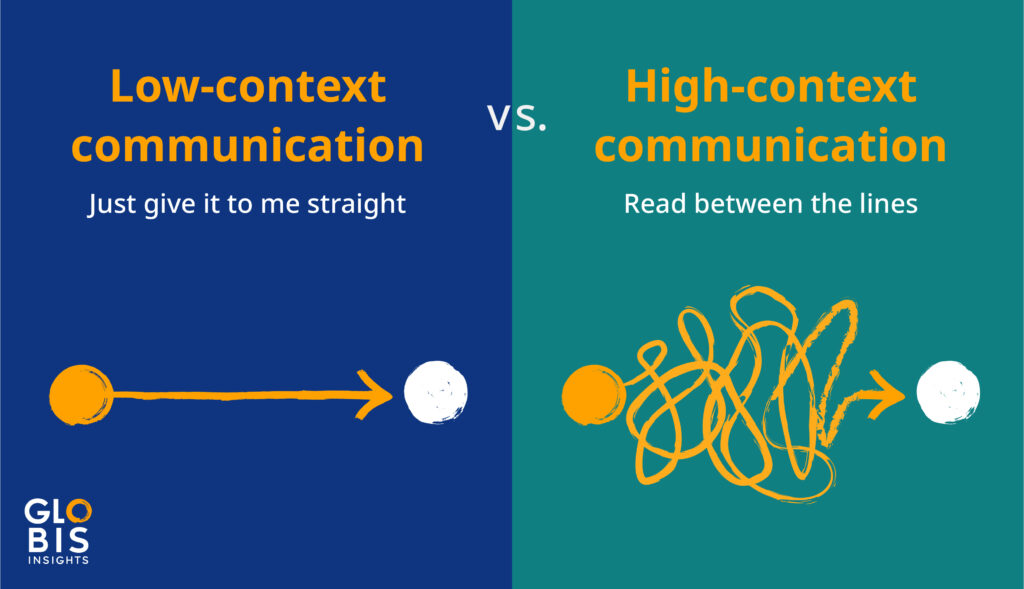
What Does Reading the Air Mean in Japan?
We’ve all been there. You thought that zinger would bring the house down but the joke falls flat. You point something out and the meeting goes quiet. As Westerners, we tend to wear our hearts on our sleeves, and we aren’t afraid to let our coworkers know when they need to chill.
But in Japan, a faux pas isn’t directly called out. Is Takashi-san really complimenting your watch, or are they hinting that it’s time to wrap up this meeting that could’ve been an email?
In a country where high-context communication is king, reading social cues is an essential skill. Especially if you want to avoid awkward situations and countless late nights wondering why nobody laughed at your jokes.
Learn how to read the air.
Commonly translated as ‘‘reading the room,’’ the expression kuuki ga yomenai (空気が読めない), or ”KY’’ for short, literally means ”not reading the air’’ in Japanese. This supernatural ability to maintain situational awareness is crucial to your success in the Japanese workplace.
Here are the basics to get you started…
Read Between the Lines
The Japanese language is notorious for its subtlety, and in Japan you are rarely given absolutes. Instead of “No, we can’t do that,” you’ll hear, “It may be difficult to meet that deadline.” It’s up to you to take the hint and respond with:
“I understand. In that case, what timeline is suitable for you?”
Tune into Micro-Expressions
Many Japanese people have been taught to switch between omote (the public face) and ura (the private face). In other words, the Japanese try to keep their emotions in check while in a professional setting. But if you watch for subtle cues, you’ll quickly learn to grasp the mood.
Megumi-san may greet you with a bright smile every morning, but that doesn’t mean she’s interested in hearing all about your weekend fishing trip. Her head may be bobbing along, but if you notice she continues to glance at her monitor, she’s letting you know it’s time to wrap it up.
Do as others do.
Japan is a collectivist society, so going with the flow is ingrained into the culture. You may want to vent about a tough presentation in the elevator, but if everyone else is quietly looking at their phones, this isn’t the time or place to do it.
Ask for a Debrief.
If you thought a meeting went well but get an email two days later stating that your proposal has been rejected, don’t tear yourself up wondering why. Try asking an expert (i.e. Japanese colleague) to find out what went wrong. You’ll likely learn that you missed an obvious hint that signaled your proposal wasn’t a home run.
Take note of those ques and try your best to identify them yourself next time.
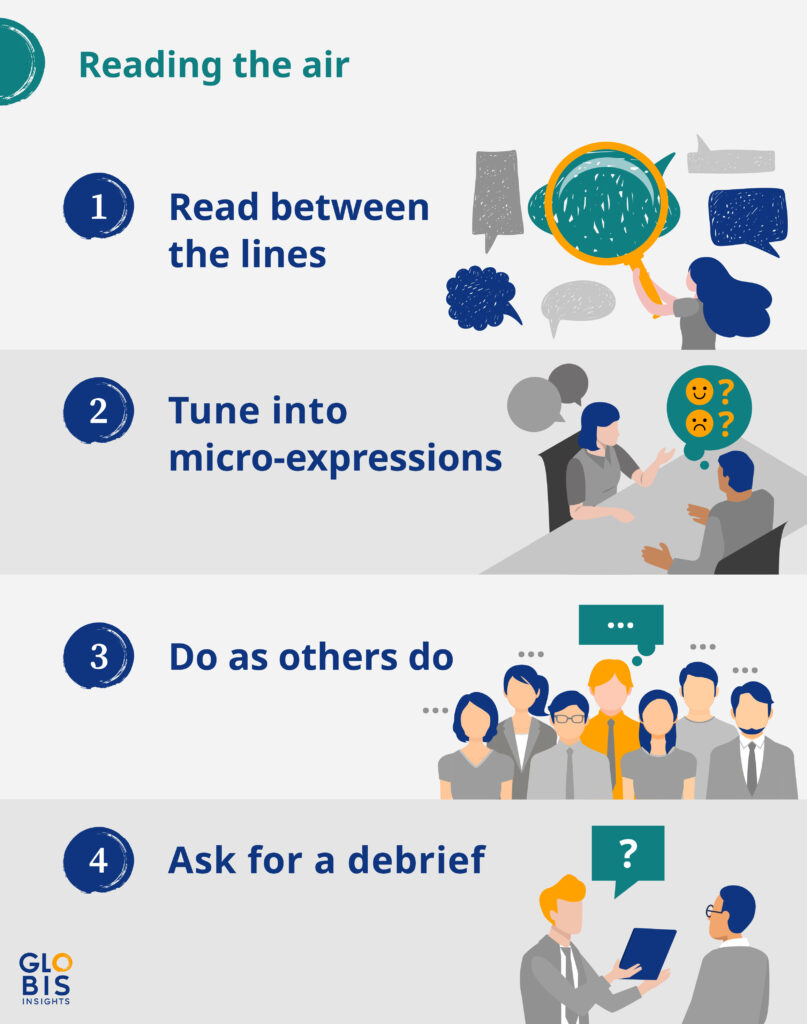
Next Article
Japanese Working Culture: The Good, the Bad, and the Getting Better
Diversity in the Japanese Workplace Then & Now
Are You Prepared for Japanese Work Culture?
What Does Saving Face Mean?
Mistakes happen, that’s life. But calling out a coworker’s fumble, even with the best intentions, can leave a lasting scar. What you may think is a simple suggestion can easily come off as brash in a Japanese work setting. The concept of ‘face’ varies across countries, regions, teams, and individuals.
In general, saving face in Japan is an exercise in humility that will help prevent you from forcing yourself (or someone else) into the spotlight.
For example, instead of loudly saying…
“Using a formula in Excel is much faster, you know.”
Try a different approach…
Ask your coworker if they have a few minutes for a private chat and gently initiate the discussion by saying,
“I’m not sure if you’re aware, but you can use formulas in Excel to make this easier on you. I’d be happy to show you how, if you’d like.”
By adjusting your phrasing and choosing your environment wisely, a comment that could be interpreted as a public accusation of incompetence (losing face) is transformed into thoughtful, helpful advice (giving face).
Offering a subtle show of support also gives your coworker a chance to rectify the situation and avoid further embarrassment (saving face). This will benefit everyone down the road. Instead of shining a spotlight on a clunky workflow, you’re giving your whole team a chance to shine by increasing their efficiency.
Here are some tips to keep in mind…
- Try to give advice in a private setting.
- Show humility when receiving praise.
- Defer to those with more experience, even if you know the answer.
- Don’t correct language mistakes unless explicitly requested.
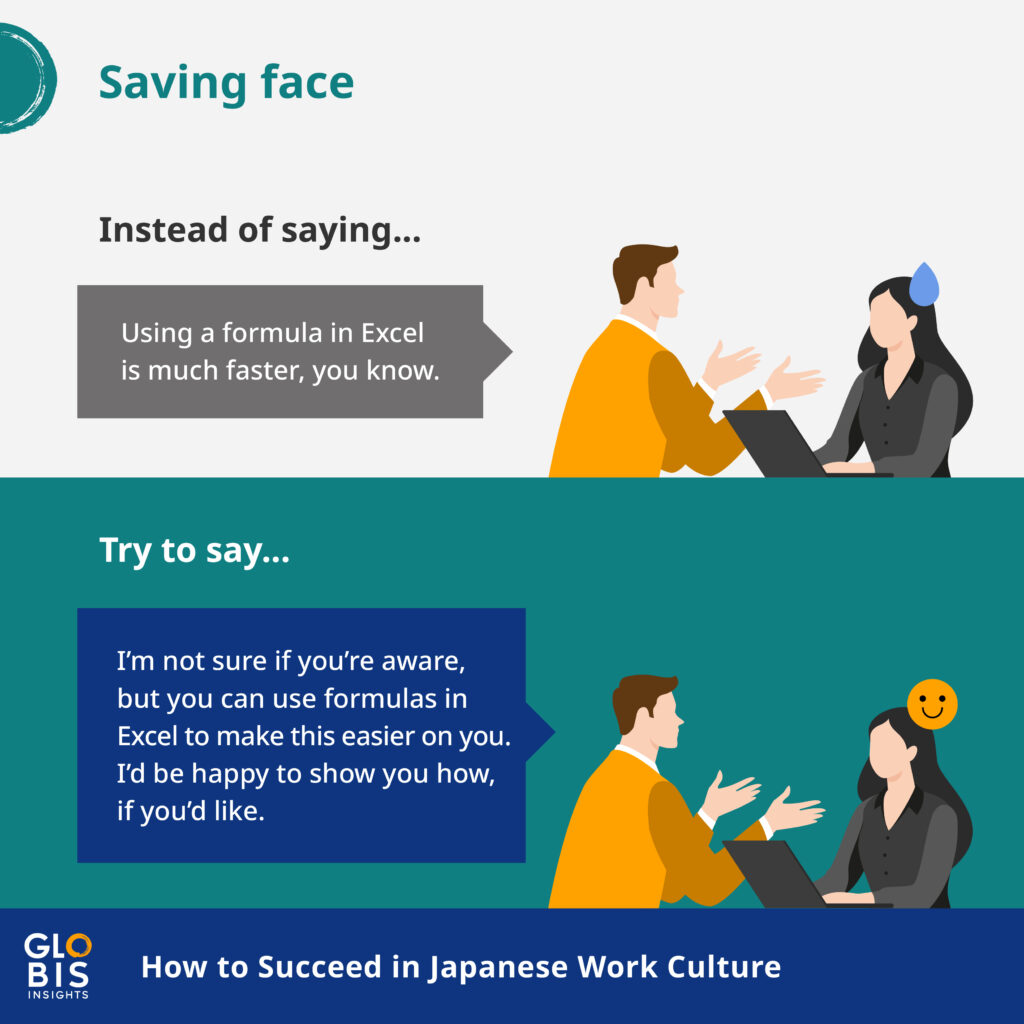
What Is Nemawashi, AKA the Shadow Meeting?
In the Japanese workplace, it’s common for coworkers to hold a nemawashi, sometimes called a ”shadow meeting,’’ to gauge participants’ true feelings about a particular situation.
A nemawashi is useful for working in Japan’s high-context environment, especially if your superiors will be attending the real deal.
In Japan, by the time a team gets together to discuss a proposal, most of the major decisions have already been decided. That means a traditional meeting typically exists to go over the details and make sure everyone’s on the same page. Whoever’s leading the meeting may ask if anyone has any objections, but if you speak up, you’ll likely embarrass or even insult your colleagues.
If you’re unsure of a decision, or even disagree with the direction that a certain project is taking, pulling aside your coworkers for a more casual chat, or nemawashi, to discuss these concerns is the way to go. You may or may not be able to sway opinion, but you will preserve group harmony by airing these concerns ahead of time, in private.
And if you really need to vent, save it for the nomikai…
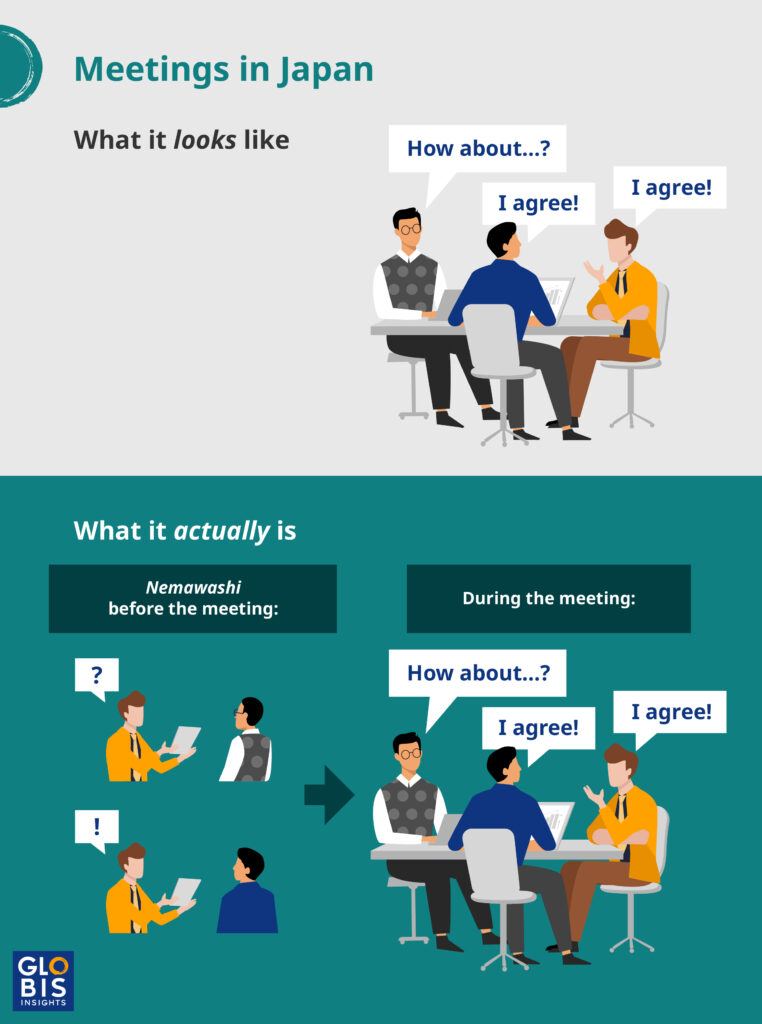
What Is a Nomikai (Japanese Drinking Party)?
Working hours in Japan are some of the longest in the world. And for many traditional Japanese companies, your duties aren’t always over after you clock out.
Most companies will hold a handful of seasonal gatherings and other get-togethers to promote a sense of community among their staff throughout the year.
You may feel like you spend enough time with your colleagues as it is, so it can be tempting to check ‘’no’’ on Google Calendar—but try your best to join when you can. Compulsory or not, showing up will boost your reputation at the company and show your team that you’re interested in getting to know them better.
In Japan, drinking with coworkers is serious business.
The nomikai or ‘’drinking party’’ is a sacred ritual in corporate Japan. Yes, that’s right! You are encouraged to get drunk with your boss. Sounds cool, huh?
Oh, my sweet summer child.
Japan has a rich drinking culture that plays an important role in team bonding. Even if you don’t drink alcohol, you’d be doing yourself a disservice to skip out. Removed from an office setting, you’ll find that your coworkers will open-up in ways you’ve never experienced before.
After a couple drinks, you’ll find that your boss wants to hear your opinions on how he can improve, megumi-san would love to hear all about your weekend fishing trip…and your senpai is angry that you never poured him another beer.
Leadership with Passion through Kokorozashi
The key ingredient to success? Passion.
Finding your kokorozashi will unify your passions and skills to create positive change in society. This GLOBIS Unlimited course will help you develop the values and lifelong goals you need to become a strong, passion-driven leader.
Although attending a nomikai is a great opportunity to bond with coworkers, there’s still rules and pleasantries to keep in mind.
Here are the most essential nomikai etiquette to get you started…

And if you commit a small faux pas, don’t sweat it.
Putting in a noticeable effort will win you plenty of brownie points with your Japanese coworkers.






